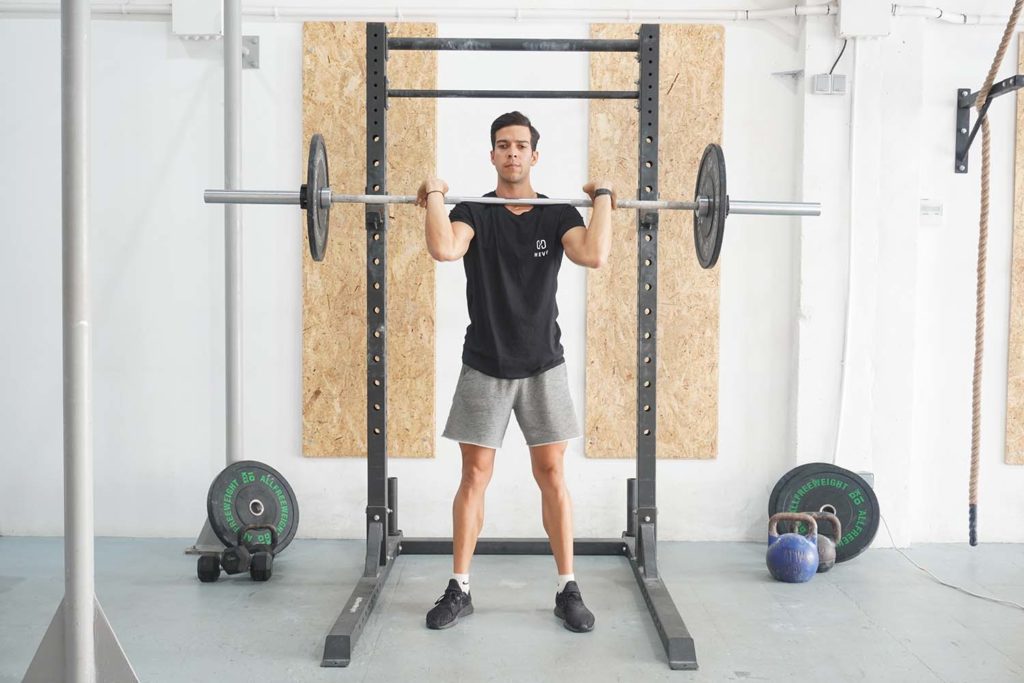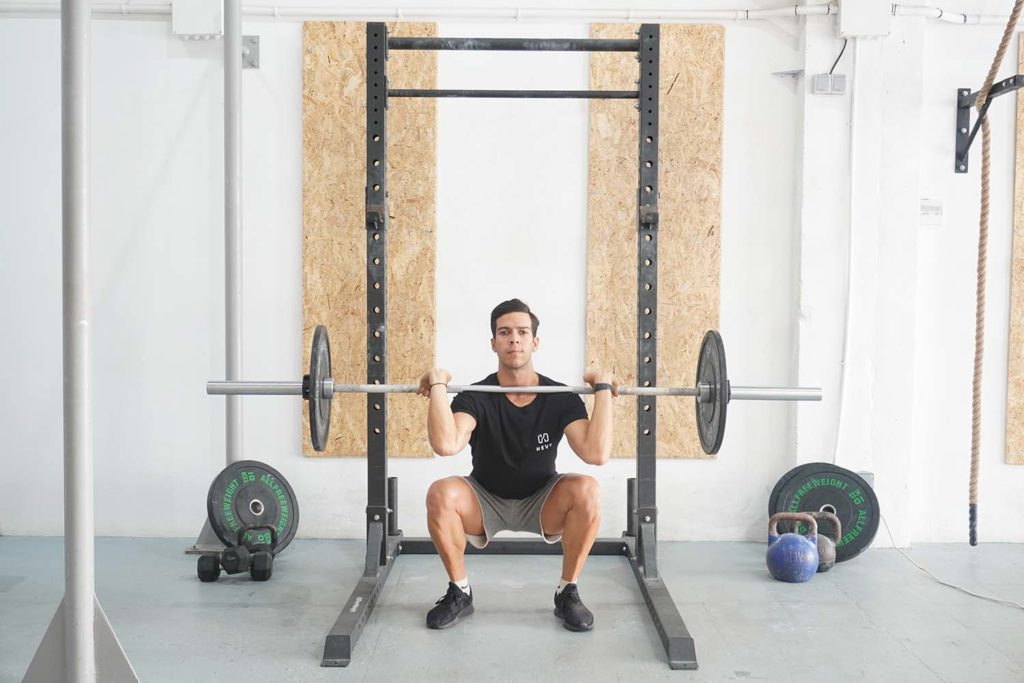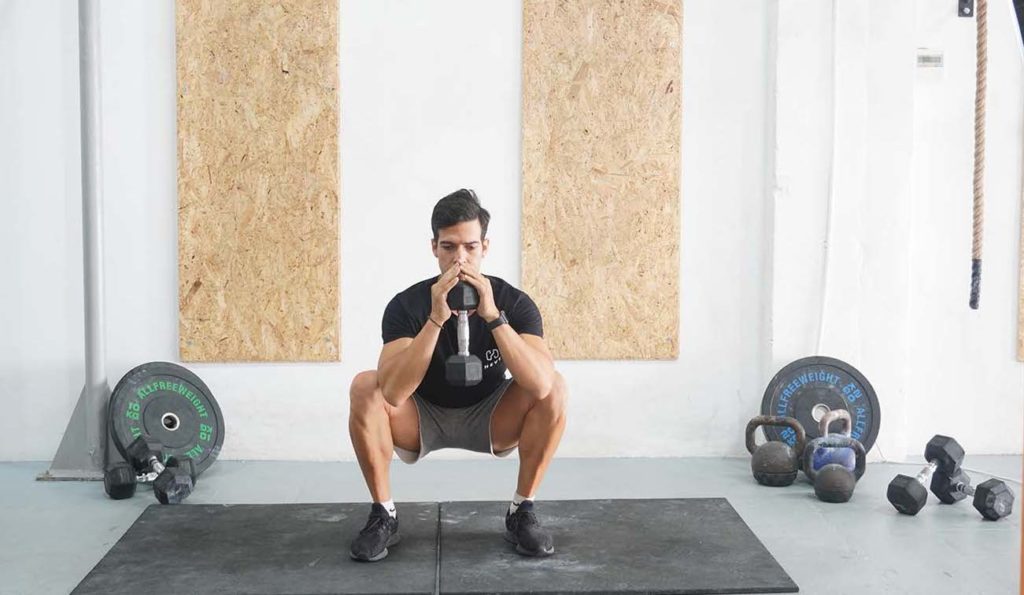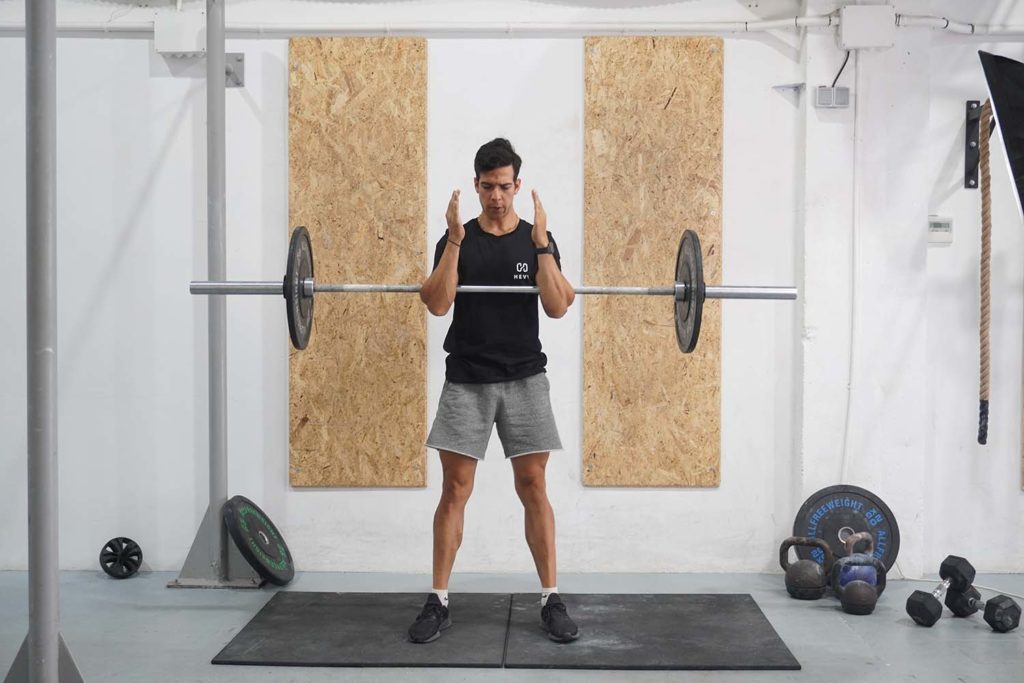What are the benefits of the front squats?
Everyone knows that back squats allow us to lift more weight. Unsurprisingly, the back squat is a favorite of many because we correlate more weight with better results. But front squats are a fantastic example of why the amount of weight we lift isn’t the only factor for success.
The front squat is a full-body barbell exercise that forces lifters to evaluate many things about their training. Most notably, doing front squats is an excellent way for trainees to spot weaknesses and mobility issues. For example, a weak upper back or core would stop you from front squatting effectively because you’ll struggle to maintain an upright torso.
Front squats are also great because they prevent the use of too much weight. You will drop the barbell in front of you if you try squatting a load you can’t handle.
How to do a Front Squat
- Position the barbell at roughly collarbone height.
- Dip by bending your knees slightly, press your upper chest against the bar and extend your arms forward.
- With your shoulders now in contact with the bar, bend your right elbow and bring your right forearm over the bar with the hand resting atop your collarbone. Bend your left elbow and position your left hand on top of your collarbone, right over the bar.
- Position the barbell on top of your shoulders, bring your chest out, take a breath, make sure that your torso is upright, and extend your knees to unrack the bar.
- With your torso upright and bar resting securely on your shoulders, take two steps back to clear enough room.
- Take a deep breath and descend by bending your knees while keeping your torso upright. Think of it as if you were trying to sit in an invisible chair.
- Go down as comfortably as you can, ideally until your thighs are parallel with the floor.
- Push through your heels to raise yourself and exhale near the top of the repetition.
- Take another breath and repeat.
What muscles does front squats activate?
The primary muscles involved in front squats are the quadriceps, which cover the front side of our upper thighs (1). The muscle group has four heads and produces knee extension (straightening of the leg). Unlike back squats, where hip extension often compensates, allowing us to lift more weight, front squats work differently. The movement forces a more upright torso, which leads to greater quadricep activation (1).

Like most other squat variations, front squats also involve our hamstrings and glutes to some degree. Both muscle groups contribute when squatting down and going back up. But hip extension plays a more minor role because of the more upright torso, so our quadriceps do most of the work.
Our midsection muscles also work heavily during front squats. The rectus abdominis, transverse abdominis, and obliques flex isometrically to keep us in position, allowing us to maintain an upright torso under the barbell’s load.
Front squats are also fantastic for testing and improving upper back strength. Our trapezius, latissimus dorsi, rhomboids, infraspinatus, and other small muscles must work hard to maintain shoulder position. Together with our midsection, the upper back plays the critical role of keeping the torso upright.
Front squat vs. Back Squat
The front and back squat are two unique exercises for whole-body strength, balance, and musculature. Both movements offer benefits, and neither is inherently superior to the other.
The back squat is a compound movement that allows us to lift more weight because we don’t have to maintain an upright torso. The barbell rests on the upper back, leading to torso lean as we descend. The position is easier to achieve, which means we can use more weight.
In contrast, we have to keep the barbell over the anterior part of our shoulders during front squats. The barbell’s position pulls us forward, so we must maintain an upright torso to keep the weight over mid-foot. Doing so is much more challenging to pull off, so front squats are more difficult to learn.
Both exercises follow the same pattern and train the same muscle groups. Back squats rely on hip extension and our posterior chain muscles, thanks to the torso position. In contrast, front squats force us to rely solely on knee extension and quadriceps strength.
Variations and Modifications of the Front Squat
1. Clean Grip Front Squat
The clean grip front squat is a variation where you use a special grip. Instead of folding your hands, you point your elbows forward and bend your wrists. The position allows you to support the barbell with your fingertips but requires great shoulder and wrist mobility to pull off.
2. Pause Front Squat
The pause front squat is a good variation if you want to challenge yourself without squatting more weight. The goal with this movement is to squat as low as you can, then maintain the position for a second or two. Doing so prevents the use of the stretch reflex and instead forces your lower body to work harder.
3. Heel Elevated Front Squat
The heel elevated front squat is a variation where you squat in Olympic shoes or elevate your heels in another way. Doing so will allow you to squat deep with an upright torso even if you don’t have the best ankle mobility.
Mistakes to Avoid

A common mistake people make when first doing the front squat is allowing their elbows to dip forward. The problem typically comes from using too much weight or not having adequate shoulder or wrist mobility. You will drop the barbell forward if your elbows fall enough.
Another common mistake with front squats is starting with too much weight. Trainees reason that if they can back squat 300 pounds, they should start with around 200 pounds on front squats. We recommend starting with an empty barbell and doing a few sets to get a good feel for the movement. After that, add weight in 10-pound increments until you reach a sweet spot of adequate weight and good technique.
You also need to be mindful of your core and keep it tense throughout the exercise. Relaxing your midsection even for a moment can mean losing your balance and dropping the weight forward.
The last mistake to avoid is letting your weight shift on your toes. Doing so will inevitably lead to losing your balance and falling forward with the barbell. Avoid the mistake by actively sitting back and putting more weight on your heels.
Similar Exercises to the Front Squat
Goblet Squat

The goblet squat is an exercise where you hold a dumbbell in front of your chest. The movement offers many of the front squat’s benefits because you have to maintain an upright torso. As a result, your back, core, and quadriceps work extra hard.
Zercher Squat

The Zercher squat is a slightly unusual variation but offers many benefits. You have to support the barbell with the crease of your elbows. Your biceps, upper back, and core work extra hard to keep you in position and prevent the barbell from falling forward.
Resistance Band Front Squat
The resistance band front squat is a variation where you use a long looped band for resistance. You have to step over the band and place it over your shoulders, which allows you to mimic the front squat biomechanics.

